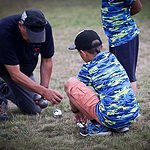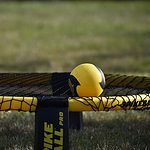Just as Cinderella's glass slipper was tailored for her foot alone, the right shoes for badminton are designed to cater specifically to the demands of the game's rapid and intricate footwork.
You've likely invested time in perfecting your serves and smashes, but have you given thought to the role your footwear plays in your performance? Special shoes for badminton aren't just a fashion statement; they're a critical component in your arsenal. With the right pair, you can enhance your agility, protect yourself from injury, and even gain that split-second advantage that often decides the outcome of a match.
As you consider the array of shoes available, it's essential to weigh their features against your playing style and the level at which you compete. The question isn't just whether you need special shoes, but what kind will elevate your game to its peak potential.
Key Takeaways
- Specialized footwear in badminton is essential for reducing the risk of injuries during rapid lateral movements and sudden stops.
- Badminton shoes provide better grip and stability, preventing slips and unexpected twists.
- The thin and hard-wearing soles of badminton shoes offer a close-to-court feel for precise footwork.
- Cushioning in badminton shoes acts as a shock absorber, protecting joints and providing comfort.
Importance of Specialized Footwear
Understanding the importance of specialized footwear, particularly in a sport like badminton, is crucial as it significantly reduces your risk of injuries and enhances your overall play. A good pair of badminton shoes is designed with the soles of badminton shoes in mind to provide better grip and stability. This tailored grip reduces the risk of ankle injuries by preventing slips and unexpected twists during rapid lateral movements and sudden stops.
The soles are typically thin and hard-wearing, offering a close-to-court feel that's essential for precise footwork. Additionally, the cushioning in badminton shoes acts as a shock absorber, mitigating the impact of jumps and lunges on hard surfaces. This not only protects your joints but also allows for a more comfortable game.
For optimal performance, you'll want to look for shoes that combine lightweight materials with adequate ventilation, keeping your feet cool and reducing fatigue. It's paramount to select shoes that fit well to avoid blisters and ensure maximum support.
Analyzing Sole Characteristics
Having established the importance of specialized footwear in badminton for injury prevention and performance enhancement, let's now examine the sole characteristics that are fundamental in choosing the right shoes for the game. The right sole on your badminton shoes isn't just about comfort; it's a critical factor for your agility and safety while playing badminton.
Here's a concise breakdown of the key sole features you need to look for:
| Feature | Description |
|---|---|
| Grip | Optimal grip to prevent slips and maintain stability during rapid movements. |
| Material | Non-marking rubber designed for court traction without leaving scuffs. |
| Thickness | Thin yet durable to ensure close-to-court feel for better control. |
| Flexibility | Adequate to allow natural foot movement and facilitate quick directional changes. |
When you choose the right badminton shoes, consider the power cushioning—which contributes to shock absorption and energy return. This is paramount for badminton players who are constantly jumping and landing. Moreover, the sole's flexibility should permit swift footwork without risking injury. Constant lateral movements demand a sole that bends effectively yet provides unwavering support. Remember, the specifics of sole characteristics can markedly influence your performance and risk of injury on the court.
Evaluating Cushioning and Support
When evaluating the cushioning and support of badminton shoes, it's essential to consider how the design and materials contribute to reducing injury risk and enhancing comfort during play. Good badminton shoes offer a specialized blend of cushioning and support that not only prevents injuries but also enables you to move swiftly and confidently across the court.
Here are three critical aspects to consider while buying badminton shoes:
- Injury Prevention: Quality cushioning absorbs shocks and impacts, crucial for protecting your joints during the repetitive jumping and lunging motions in badminton.
- Defined Support: A well-structured support system in the midsole keeps your foot stable and secure, mitigating the risk of ankle rolls or twists.
- Comfort and Performance: Adequate cushioning and support enhance comfort, reducing fatigue and allowing you to maintain peak performance throughout your game.
Finding the Right Fit
Selecting the ideal size and fit in badminton shoes is critical to optimizing your court performance and preventing foot-related injuries. To choose badminton footwear effectively, you must assess several factors that influence the suitability of the shoe for your individual needs.
The best pair of badminton shoes must cater to your foot type and provide the necessary support where it's most needed. Players need to consider their level of play, as professional athletes require different features compared to recreational players. The right pair of badminton shoes will also depend on the intensity and frequency of your games.
Here's a technical breakdown to help you select the right fit:
| Factor | Description | Impact on Player |
|---|---|---|
| Grip | Ensures stability during swift movements | Reduces risk of slipping |
| Sole Stability | Prevents excessive foot rotation | Protects against ankle injuries |
| Cushioning | Absorbs shocks during play | Decreases fatigue and injury risk |
| Weight | Lighter shoes for better maneuverability | Enhances speed and agility |
| Ventilation | Airflow to reduce heat and moisture | Prevents blisters and discomfort |
When considering these factors you need to weigh their importance based on your individual play style and physical requirements. Always try on multiple sizes to ensure the optimal fit for peak performance.
Understanding Flexibility and Stability
In badminton, the interplay between shoe flexibility and stability forms a critical foundation for peak court performance. When selecting a pair of badminton shoes, you need to consider how these factors enable you to react and adapt to the fast-paced nature of the game. Unlike running shoes, which prioritize forward motion, badminton footwear must support the multidirectional movement inherent in the sport.
Consider these critical points:
- Flexibility – Your shoes must allow for swift lateral movements and quick pivots without restricting your feet.
- Stability – A stable shoe prevents ankle rolls during sudden stops and changes in direction, which are frequent during intense training and matches.
- Cushioning and Grip – Adequate cushioning absorbs impact from jumps, while a reliable grip keeps you agile on your feet without slipping.
To find the best shoe for your game, you must analyze the technical aspects of badminton shoes. They're engineered to provide the right balance between flexibility, for changing directions, and stability, to maintain control. This balance is pivotal in preventing injuries and enhancing your court performance.
Considering Weight and Movement
Assess the weight of your badminton shoes carefully, as lighter footwear can significantly enhance your agility and decrease fatigue during prolonged matches. When buying badminton shoes, it's crucial to strike a balance between lightweight construction and the durability required for the sport's demanding nature. Lighter shoes can provide quicker footwork, an essential component in playing badminton effectively.
Moreover, the best pair of badminton shoes should offer proper cushioning. This feature isn't just about comfort—it's about absorbing impact to mitigate injury risks associated with the sport's intense lateral and vertical movements. Cushioning also works in tandem with the shoes' flexibility, which is indispensable for executing the rapid directional changes that are characteristic of high-level play.
Another critical aspect to consider is the grip of the shoes. A robust grip ensures stability and prevents slipping, hence it's a non-negotiable feature in a sport that involves swift, explosive movements.
Lastly, don't overlook ventilation. Good airflow helps keep your feet cool, warding off discomfort and potential distractions.
As you choose your equipment, remember that the right badminton shoes are a symbiosis of these features—designed to complement and enhance your movement on the court.
Selecting Shoes Based on Skill Level
While weighing up factors such as cushioning and ventilation is crucial for your performance, it's also essential to tailor your shoe choice to your level of badminton expertise, ensuring you get the support and features necessary for your specific stage of development. Selecting the right badminton shoes must be a deliberate process; different players require different specifications to optimize their game.
- Beginners: Your focus should be on stability and comfort, not just cost. Opt for shoes with good cushioning to absorb shocks and a reliable grip to prevent slips during rapid movements.
- Intermediate Players: At this stage, you likely have better control and footwork; thus, badminton shoes with enhanced support and better ventilation will cater to the increased intensity of your play.
- Professional Players: You need the best. Look for shoes with superior traction, lightweight design for swift footwork, and exceptional durability to withstand rigorous training and competition.
Keep in mind that the best badminton shoes while playing are those that fit well; improper sizing can negate any technical benefits. Moreover, as professional players, your shoes are your tools—investing in top-tier gear is non-negotiable to maintain peak performance.





